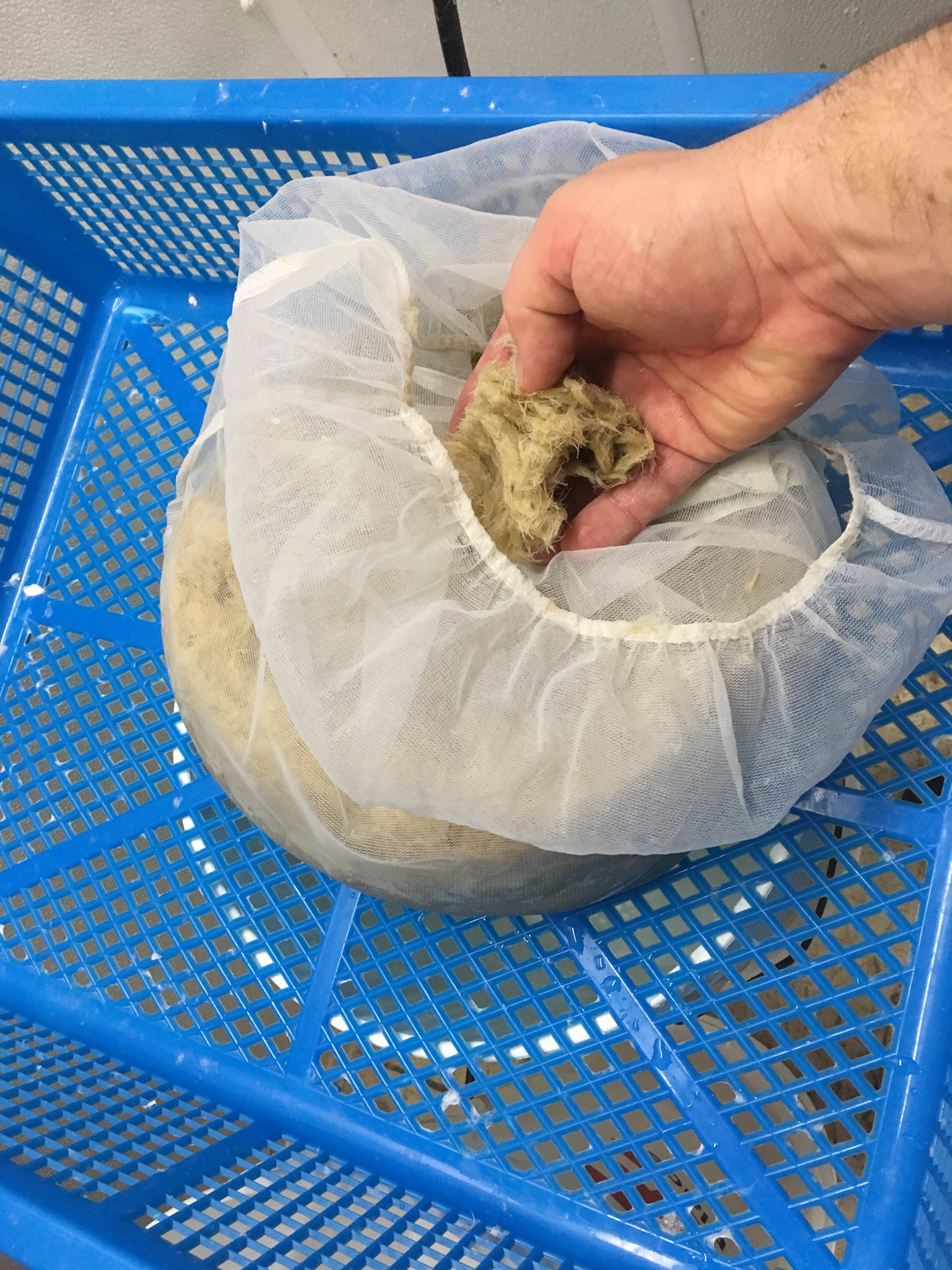













Papermaking was transported to Europe in the 12th century from China, where it was invented more than one thousand years earlier. 21st century hand papermaking is not much different from what was occurring in Italy during the 1100s. An engraving from Diderot’s Encyclopedie of 1751.

Type R Flax is a commercially grown, processed and cut flax. It is a beautiful golden color. Flax is a very strong fiber that has been used to make paper and linen fabric for hundreds of years.

To break down the fiber and remove elements that will degrade the paper, it is cooked in a caustic solution of soda ash and water for six to eight hours.

After the cooking is completed, the fiber is thoroughly rinsed to remove any of the remaining caustic solution or “liquor.”

A Hollander Beater is used to turn the fiber into a pulp. The beater’s basic design has not changed much for the past 400 years.

After the fiber is added to the water in the beater, it will be beaten for at least four hours.

After beating the fiber, the pulp is added to a vat with additional water to create a slurry. A mould (and deckle - not pictured) is then used to pull individual sheets.

The paper on the mould is transferred to a waiting woolen felt, where it is transferred in a process called “couching” (pronounced cooching).

Once a sheet is couched to the felt, another felt is laid down on top to accept additional sheets until a stack or “post” of paper is created. This post is then pressed under 2000 pounds of pressure to remove the majority of the water from the sheets.

Post-pressing, the still wet sheets are transferred to blotters that will be placed in a dryer to finish up the drying process.

The stack of sheets, situated between blotters, go into a dryer and air is blown or “forced” into the stack to aid in drying. 24 hours is typically the time needed to thoroughly dry the paper.

One batch of paper in our two pound beater will produce approximately 70-75 sheets of 9 x 12 inch paper.